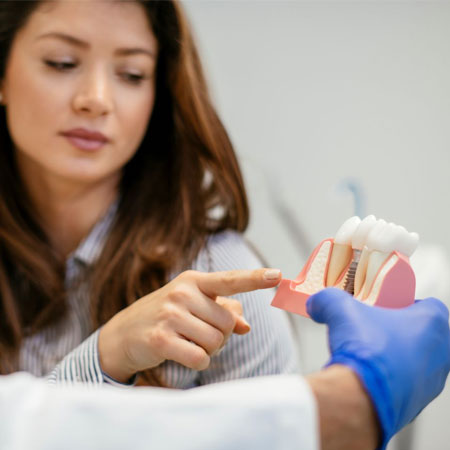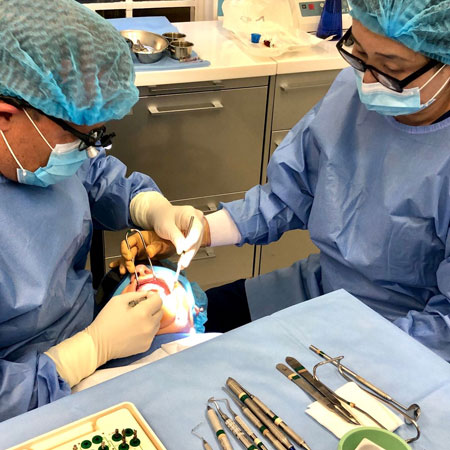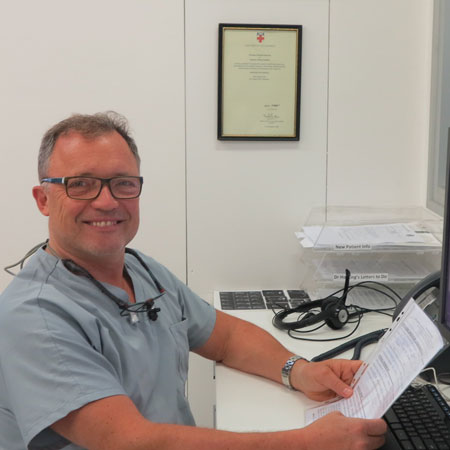Implant Restoration
The stages involved...
When restoring a dental implant, Dr Hocking and his team have a treatment process they follow detailed below.
If you have any questions about this process please contact us.
-

1. Consultation
Implant/s are reviewed and integration is confirmed. X-Rays are taken to assess depth of implant below gum.
-

2. Implant Restoration
Impression copings are connected and impressions are taken and sent to the laboratory.
-

3. Review
Patients are reviewed 3 to 4 months following implant placement - this includes clinical tests, soft tissue assessment, radiographs.
Consultation
Once the implant/s have been reviewed, and integration has been confirmed, we then need to restore the implant with a crown or a bridge.
Initially and x-rays taken to assess the depth of the implant below the gum.
Implant Restoration
Impression copings are then connected and an impression is taken to send to the laboratory. In cases where aesthetics are important, patients often visit the technician to ensure not just a perfect shade match but also the incorporation of any individual characteristics the patient might request.
Sometimes with more complex cases, a provisional restoration is initially placed to allow for more careful assessment of things like aesthetics and function. This is regularly done for front teeth because we need to establish the emergence profile, or shape of the gum prior to constructing the crown.
In large cases, particularly where a full arch is involved, we sometimes provide a provisional bridge which is used by the patient for several months. This means we can adjust gradually as required and then simply copy the resulting provisional bridge in the definitive stage. Provisional bridges are often made of PMMA or acrylic, and definitive bridges are now normally made with veneered Zirconia (see examples below)
Review
We review patients 3 to 4 months following restoration. We confirm implant integration has been successful with clinical tests such as assessment of the soft tissue, radiographs, and the use of the Osstell device to give us an ISQ reading (implant stability quotient). In the vast majority of cases, the ISQ is above 64 at the review appointment, and therefore the implant is safe to restore. In the rare cases it is below that number we sometimes wait for 3 more months to allow for further healing.
At this point we carefully check the occlusion to make sure the occlusal height is correct, but the shape of the crown is such that lateral and forward movements are not harmful. We also make sure the shape is cleansable and supports easy oral hygiene. Finally, we also take an x-ray to ensure bone levels have stabilised around the implant.